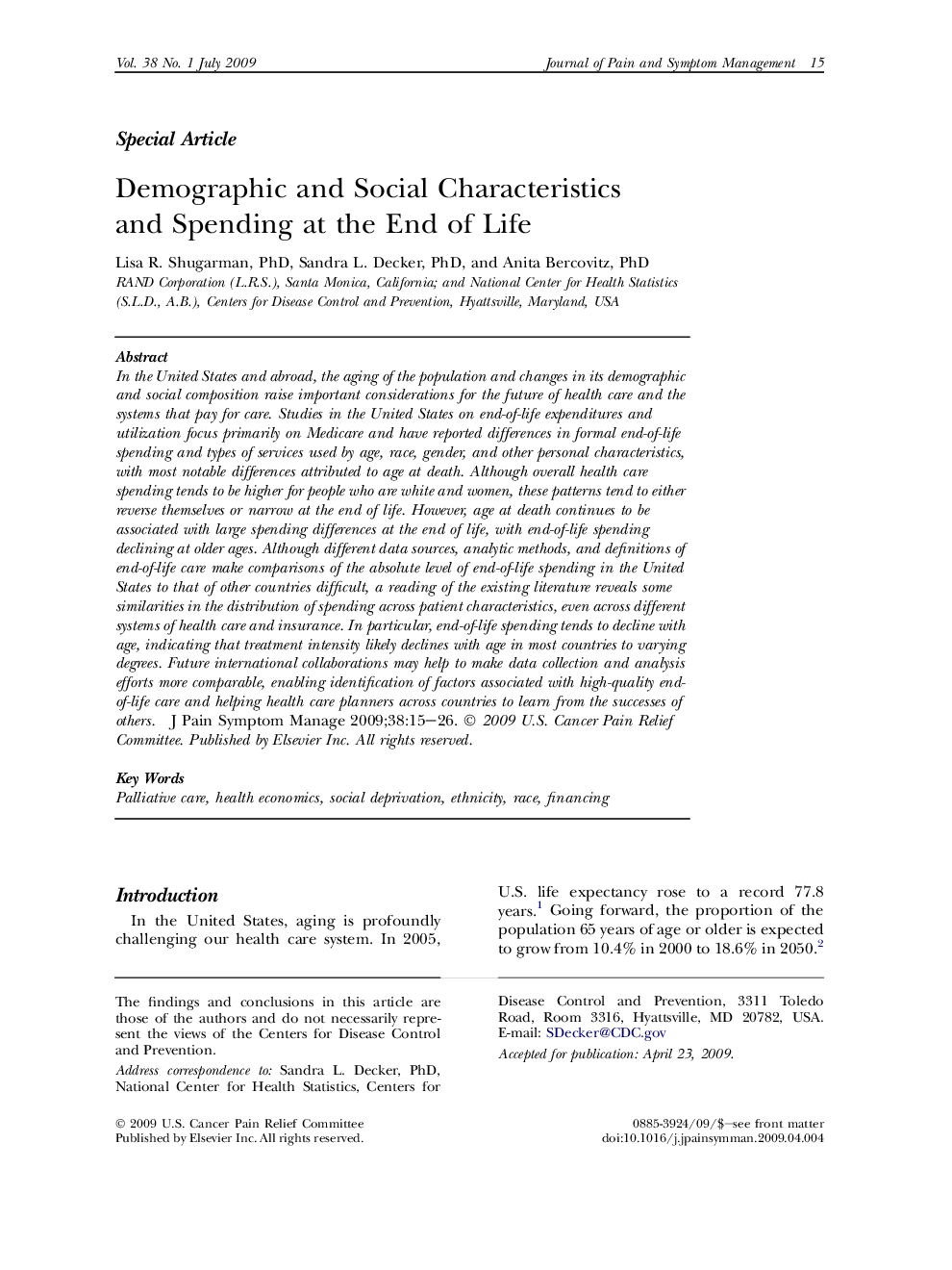| Article ID | Journal | Published Year | Pages | File Type |
|---|---|---|---|---|
| 2730624 | Journal of Pain and Symptom Management | 2009 | 12 Pages |
In the United States and abroad, the aging of the population and changes in its demographic and social composition raise important considerations for the future of health care and the systems that pay for care. Studies in the United States on end-of-life expenditures and utilization focus primarily on Medicare and have reported differences in formal end-of-life spending and types of services used by age, race, gender, and other personal characteristics, with most notable differences attributed to age at death. Although overall health care spending tends to be higher for people who are white and women, these patterns tend to either reverse themselves or narrow at the end of life. However, age at death continues to be associated with large spending differences at the end of life, with end-of-life spending declining at older ages. Although different data sources, analytic methods, and definitions of end-of-life care make comparisons of the absolute level of end-of-life spending in the United States to that of other countries difficult, a reading of the existing literature reveals some similarities in the distribution of spending across patient characteristics, even across different systems of health care and insurance. In particular, end-of-life spending tends to decline with age, indicating that treatment intensity likely declines with age in most countries to varying degrees. Future international collaborations may help to make data collection and analysis efforts more comparable, enabling identification of factors associated with high-quality end-of-life care and helping health care planners across countries to learn from the successes of others.
